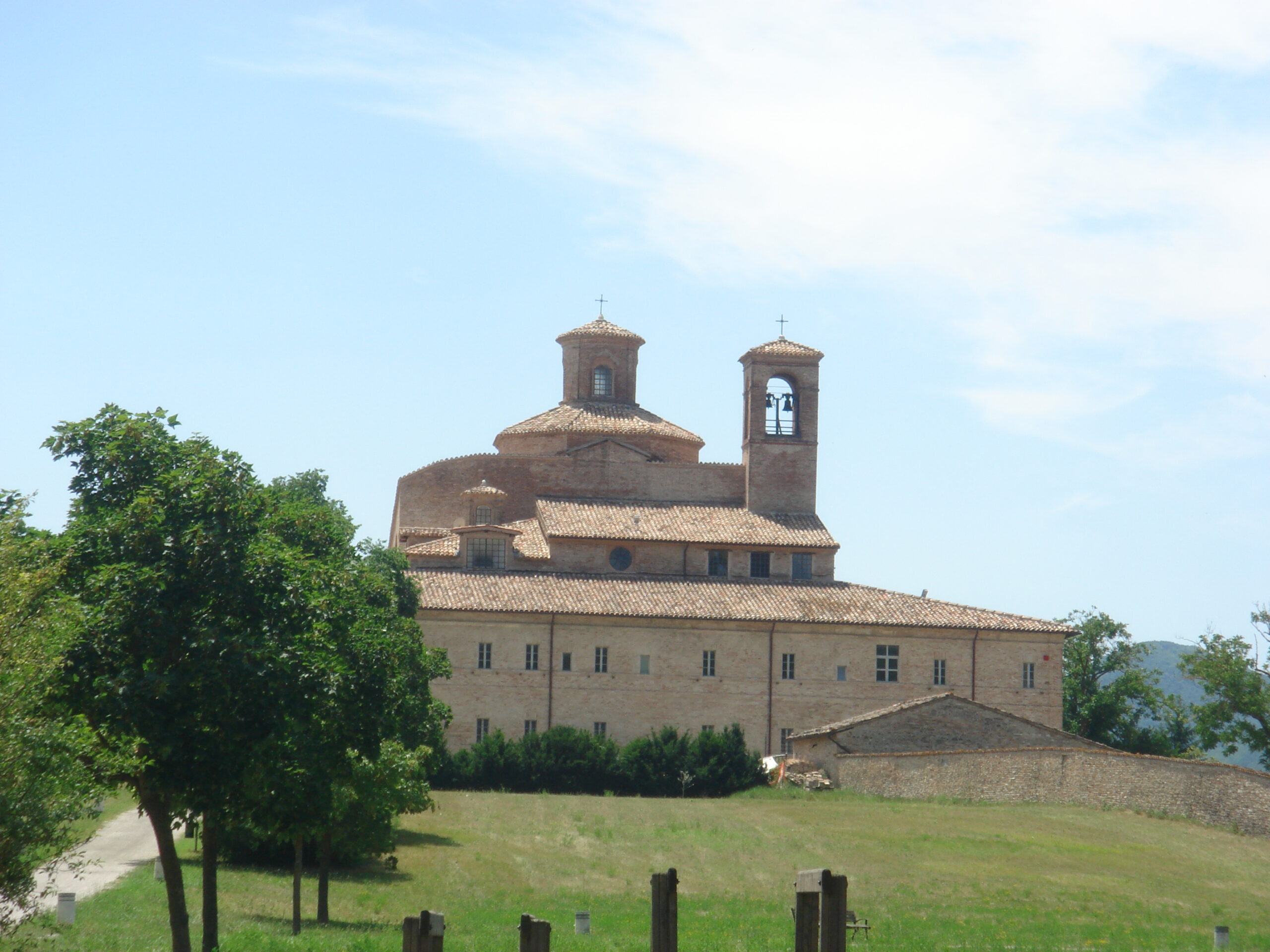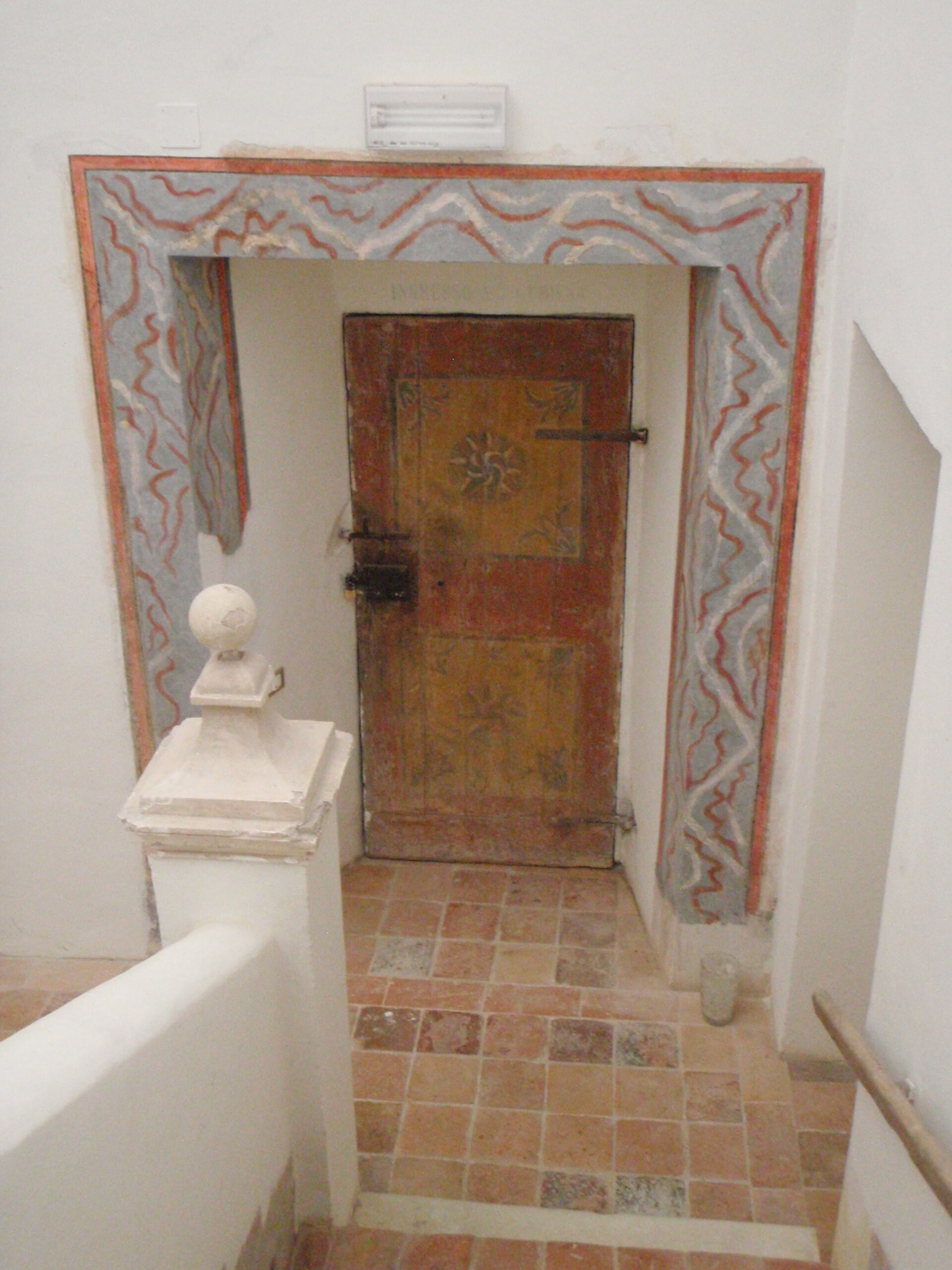On the outskirts of the small town of Urbania (formerly Casteldurante) in a public park and adjacent to sunflower fields, is the Barco, or Hunting Lodge, built for Count Federico da Montefeltro around 1465. This, the smaller of two lodges constructed for him, was easily reached by horse or carriage along the network of roads in the Marche region. However, the Montefeltro court most frequently made the journey to the lodge by boat, from the Palazzo Ducale in the town-center.
The original square, two-story structure with an open, central courtyard, provided more than adequate space for the Renaissance court. The building has since been transformed; the centrally, domed church, dedicated to Saint John the Baptist, was erected inside the former courtyard. Recent renovation revealed some of the original painted decoration, including the doors and lintels.
In the fifteenth-and-sixteenth centuries Casteldurante was a recognized center of maiolica production. Today, the Barco houses ceramic studios and offers classes. This successfully connects the region’s past with contemporary practice.
References: “Maiolica in the Renaissance.” Heilbrunn Timeline of Art History; Eiche, Sabine. The Barco of Casteldurante at the time of the last duke of Urbino (2003); Associazione Amici della Ceramica (Urbania: l’antica Casteldurante page)
Images:
Exterior views, church interior, portal & staircase. Barco. Urbania, Italy. c.1465 (Photo credit: Jennifer D. Webb)
Plate. c. 1550-1570. Maiolica (made in Casteldurate, Italy). Lille, Musée des Beaux-Arts.
Further reading: Elisa P. Sani. Italian Renaissance Maiolica. London: Victoria and Albert Museum, 2012; Getty Museum of Art, “Making Maiolica.”
Posted by Jennifer D. Webb






